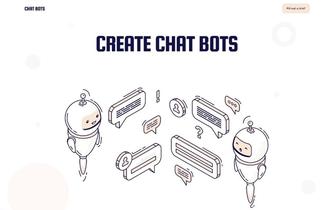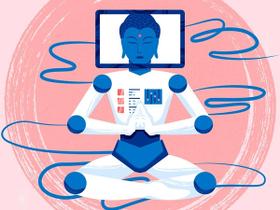Artificial intelligence like ChatGPT will change our world. Not my words, actually — it was Bill Gates who said that ChatGPT integration in the workplace will change how we do things.
Yet, not everyone shares the same enthusiasm. For example, Apple co-founder Steve Wozniak believes that while this chatbot can do “pretty impressive things”, it can also make “horrible mistakes”. So instead of just blind-following the technology, it’s always important to clearly know why and how you’re going to use it.
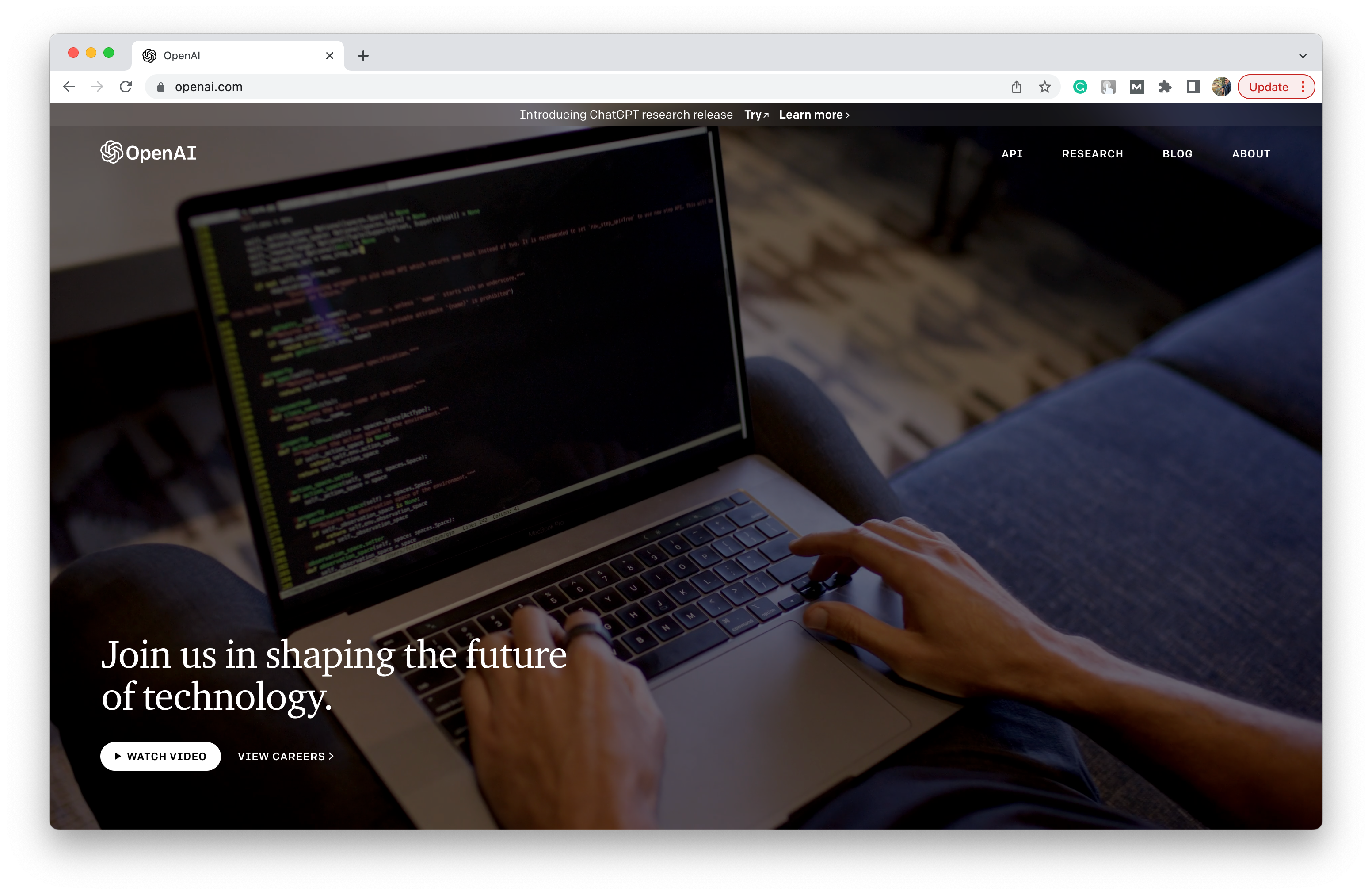
Generative Pre-trained Transformer, known as ChatGPT, has already changed the world, but how can it revolutionize your app? (shot from the OpenAI website)
In this article, we’ll provide a guide for business and startup owners who are considering integrating ChatGPT into their mobile or web products. Keep on reading to learn more about top use cases and technical ways for implementation. Let’s dive in!
⚖️ ChatGPT Integration: a Few Things to Keep in Mind
First thing first, let’s take a moment to align our understanding of this chatbot and ensure we have a clear grasp of its pros and cons.
In many articles, there’s confusion about the difference between OpenAI, ChatGPT, and GPT-3. Simply put, ChatGPT is a chatbot developed by the OpenAI company. The bot can perform various language tasks involving human language, such as answering specific questions, completing sentences, summarizing text, generating text, and more.
ChatGPT is a specific implementation of the GPT-3 language model, configured and fine-tuned to perform conversational tasks such as answering questions and engaging in dialogue.
However, you may say that chatbots and AI models have already been around for a while, so what’s the hype about? Rather than holding a lecture on AI development history, we'll provide you with a list of pros and cons of this model to help you make an informed decision before you integrate Chat GPT into your system.
Pros
- As one of the largest language models ever developed, ChatGPT can generate more nuanced and sophisticated responses than other AI chatbots.
- The GPT bot is available 24/7 and is designed to generate responses quickly, making it well-suited for real-time applications.
- ChatGPT is capable of understanding and answering questions about new topics it has never seen before.
- It’s free and comes with detailed documentation for developers.
- The bot can be fine-tuned to perform specific tasks or generate text in specific domains, making it highly flexible and adaptable to a wide range of applications.
Cons
- ChatGPT is a large model that requires a significant amount of computational resources. Thus, running it on high-traffic websites and large-scale applications may lead to delays without proper preparation.
- The content generated by the bot can be not 100% accurate, especially when it comes to factual data.
- GPT Chat integration requires professional developer skills.
- Bot-produced content is sometimes excessively complicated and lengthy.
With those considerations in mind, you likely have a clearer understanding of the do’s and don’ts regarding chat GPT integrations.
As you can see, the bot can be useful in many contexts and its usage is often limited by nothing but your creativity and imagination. However, this flexibility sometimes may be confusing: “Ok, I can use it for a lot of things but for what exactly?”. To answer this question, we’ve gathered some ChatGPT use cases that you may apply to your business.
Integrating ChatGPT can be a significant step towards enhancing your app's capabilities. Discover the broader scope of using AI in your app by exploring how to integrate AI into an app.
📈 How Can ChatGPT Integration Help Your Business?
There are dozens of ways in which different businesses may benefit from integrating ChatGPT. We’ll cover some of them in this section.
If you haven't done any extensive research on the bot before, it might seem like its main feature is text generation. However, the model itself is capable of performing far more complicated tasks, and text generation is simply the way to communicate with the end-user.

AI-based chatbots can greatly improve customer service in many ways (image by Emrah Kara)
It means the possible benefits of ChatGPT Integration go beyond “write me a LinkedIn post” tasks. Do you need to optimize a supply chain for your manufacturing business, introduce fraud detection for a banking app or improve the recommendation system on your eCommerce website? That can be done, too!
Therefore, we gathered a bunch of interesting use cases to inspire you. For your convenience, we broke them down into 5 categories:
- content generation
- workflow management
- customer experience & interaction
- security and compliance
- workflow optimization.
However, if you don’t find something that perfectly suits your needs in the use cases we share below, make sure to check a little bonus we’ve left for you at the end of this section.
Content Generation 📝
First things first, many businesses really integrate ChatGPT to perform content-related tasks. Yet, its possibilities aren’t limited just to writing — the bot can perform more complex tasks. Let’s take a look at a few examples:
ChatGPT can be used to generate content for blogs, articles, ads, marketing materials, product descriptions, etc. It can assist with research, generate topic ideas, and even write content in a specific style or tone of voice. Top industries to benefit: media, marketing, publishing, education. | It can provide automatic summarization of long articles or documents, which can be useful for people who need to quickly understand the main points of a text without having to read through the entire document. Top industries to benefit: legal, media, education. |
The bot can transcribe spoken words into text, making it easier for businesses to analyze customer conversations. Top industries to benefit: media, healthcare, legal. | You can use the bot to translate text in real time for messaging apps, social media platforms, and other communication channels. Top industries to benefit: hospitality, travel, media. |
Workflow Management ⏱️
If the product you're building aims at workflow optimization for your end-users, integrating with Chat GPT can enhance some of its features. Here are some examples:
The bot can provide virtual assistants for task management, including scheduling, reminders, and to-do lists. Top industries to benefit: marketing, finance, IT. | It can help users sort, prioritize, and respond to emails, improving productivity and reducing email overload. Top industries to benefit: eCommerce, business & professional services. |
ChatGPT can help users schedule posts, respond to comments and messages, and provide recommendations for content and engagement strategies. Top industries to benefit: marketing and advertising, eCommerce, media, entertainment. | You can use the bot to manage knowledge and information, such as FAQ pages or employee manuals, making it easier for employees and customers to find answers to their questions. Top industries to benefit: legal, healthcare, finance, education. |
Customer Experience & Interaction 👍
The use cases from this section may be relevant to quite different products — from eCommerce marketplaces to fitness apps. This is so because they’re mainly focused on improving the overall user experience, regardless of the platform (web or mobile) and niche. Here are a few examples:
The bot can answer questions, troubleshoot technical issues, and provide info about products and services. Top industries to benefit: eCommerce, healthcare, finance, logistics, Internet of Things, fitness. | ChatGPT can help personalize user experiences by providing recommendations for products, services, and content based on user preferences and behavior. Top industries to benefit: eCommerce, media, entertainment, healthcare, finance, fitness. |
You can use the bot to assist customers with their purchase decisions, such as through product comparison tools or chatbots that provide product information and reviews. Top industries to benefit: eCommerce, healthcare, finance. | It can analyze customer feedback, such as through sentiment analysis tools or chatbots that collect feedback and provide actionable insights. Top industries to benefit: eCommerce, marketing, healthcare. |
Security and Compliance 🛡️
By integrating GPT-3 Chat, you can address possible security issues. Thanks to its ability to work with large volumes of data, it can help with spotting suspicious activity or revealing the weakest places in your security infrastructure. For instance:
ChatGPT can detect fraud by analyzing large volumes of data, identifying patterns and anomalies that may indicate fraudulent activity. Top industries to benefit: banking, finance, eCommerce, healthcare. | The bot can monitor networks for suspicious activity and alert security personnel to potential threats. It also can analyze network traffic and detect anomalies, such as unusual login attempts or data transfers. Top industries to benefit: IT, security, IoT, legal, finance. |
You can use the bot to monitor compliance with industry regulations or internal policies, helping businesses avoid legal or ethical issues. Top industries to benefit: legal, healthcare, finance. | It can help businesses identify and assess potential risks, and prepare for potential disruptions. For example, it can analyze data from various sources, such as network traffic logs, to identify potential cyber threats that could impact a business. Top industries to benefit: IT, finance, logistics, healthcare. |
Workflow Optimization 📑
Finally, the bot can also help not to reinvent the whole processes and workflows but rather adjust and enhance them where it’s possible. Thus, you or your users can get even more from what they already have. Some of the examples are:
ChatGPT can use machine learning algorithms and natural language processing (NLP) to analyze vast amounts of data and provide insights that can aid in decision-making. For example, a virtual assistant powered by ChatGPT can analyze market trends, financial statements, and other data to provide investment recommendations and help investors make informed decisions. Top industries to benefit: IT, finance, eCommerce, healthcare. | The bot can analyze data from various sources, including databases, spreadsheets, and social media platforms, to provide insights on consumer behavior, market trends, and other relevant information. The virtual assistant can also help with data visualization, creating charts and graphs to make complex data more accessible to businesses. Top industries to benefit: eCommerce, analytics, consulting, finance. |
The bot can use natural language processing and machine learning algorithms to track inventory levels, monitor order fulfillment, and manage other aspects of the supply chain. Top industries to benefit: logistics, manufacturing. | It can help with budgeting, bill payment, and financial planning, and provide recommendations for investment strategies and opportunities. Top industries to benefit: finance, banking, eCommerce, retail. |
The integration of ChatGPT into various business operations unlocks a multitude of benefits across different industries. From enhancing content creation and workflow management to elevating customer experience and ensuring security compliance, ChatGPT stands out as a versatile tool. Its ability to analyze and interpret large data sets aids in decision-making, risk assessment, and supply chain optimization, making it invaluable for sectors like finance, healthcare, eCommerce, and IT. This adaptability and breadth of application demonstrate ChatGPT's potential not just as a text generator, but as a comprehensive solution for improving efficiency, personalization, and strategic planning in businesses.
🎁 Bonus: a Prompt Example for ChatGPT
Although we’ve shared quite a few use case examples above, this list is far from exhaustive. These were just some ideas to show you that the potential benefits of integrating ChatGPT are not limited to text generation.
However, as a software development agency, we understand that every project requires special treatment. If you’d like to learn exactly how ChatGPT can contribute to your mobile or web app, you can drop us a line!
Integrate ChatGPT into your app with our help!
Contact Us
Another way to learn more about its capabilities regarding your project in particular is to… ask ChatGPT! However, the quality of the answer heavily depends on the question itself. Thus, it’s necessary to write an accurate prompt that would put the bot in the relevant context.
But don’t bother doing it from scratch, as we did it for you! Below you can find a prompt example that will help the bot provide you with a detailed and insightful answer. You just need to fill in the blank spaces and send it out!
Hi, I own a ________ [type of business/app] in the ________ [industry] industry. We're looking to explore how ChatGPT can help us improve our workflows and better engage with our stakeholders. Specifically, we're interested in addressing ________ [specific challenges or pain points] and achieving ________ [specific goals or objectives].
Can you recommend some use cases and applications of ChatGPT that could be useful for our business?
It seems we’ve covered why’s of integrating ChatGPT. However, one of the key questions is still on the table: how do you make all this magic happen?
In the next section, we won’t go deep into technical details as this is not how-to instruction for developers. Instead, we’d rather want to explain to the owners of mobile and web apps the key differences in approaches to ChatGPT integration.
⚙️ Technical Ways to Integrate ChatGPT
The key thing you should know as a non-developer: you need professional developers to integrate ChatGPT into your mobile or web app. This may be everything you need to know if you decide to delegate this task to your current or future Tech Partner.
However, if you want to have a better picture of GPT Chat integration for yourself, we’ll cover that in this section!
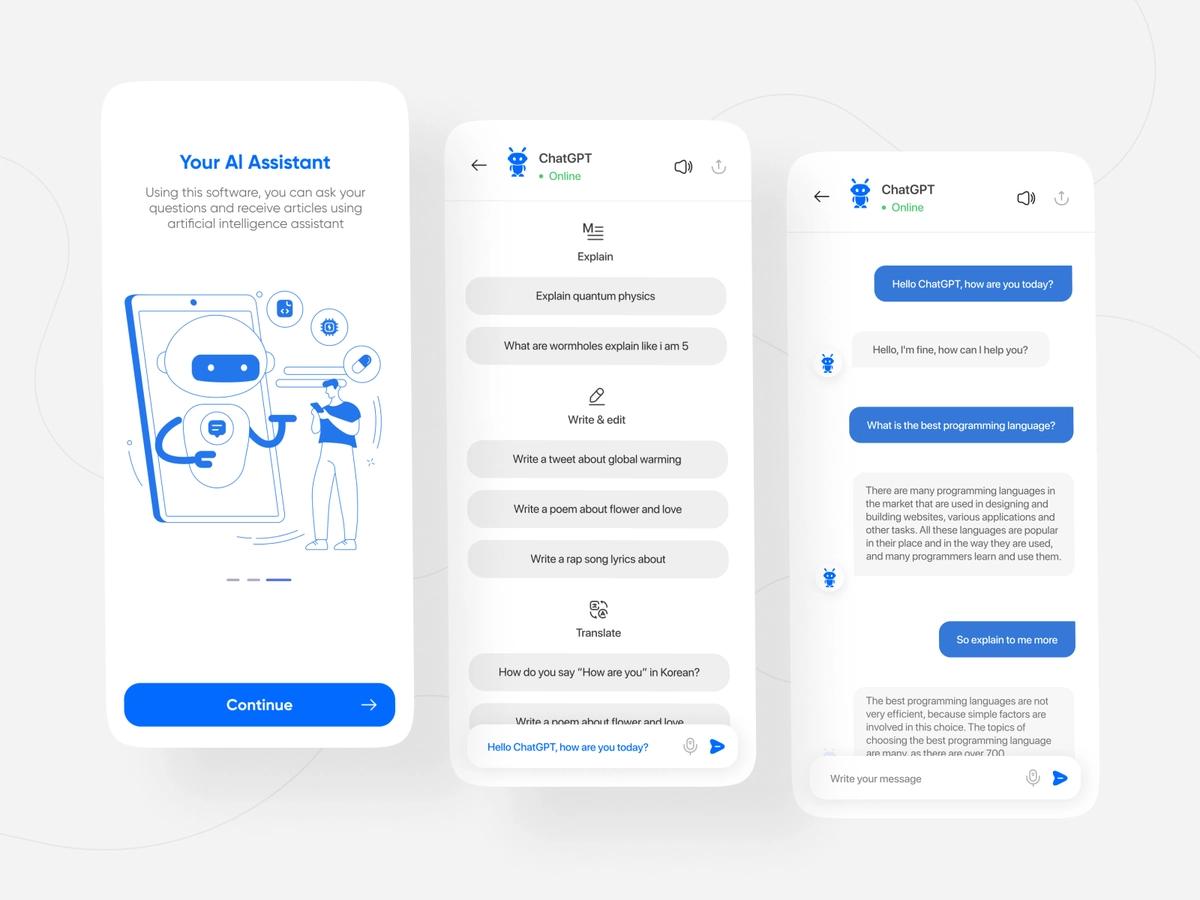
There are different ways to integrate GPT-3 technology into your app. Integrating ChatGPT's advanced neural network into your platform can significantly enhance user interaction and data processing capabilities. (image by soroush norozy)
From a technical perspective, there are several approaches to ChatGPT integration, each with its advantages and disadvantages. In this article, we decided to focus on 3 approaches:
- API integration
- using a chatbot builder platform
- custom implementation.
Let’s take a closer look at each option!
Option # 1: API
Difficulty of implementation: ⚙️⚙️/3
Customization possibilities: 📱📱/3
One of the easiest ways to integrate ChatGPT into your mobile or web app is by using an API.
An API is a pre-built solution that you can integrate into your project without having to develop anything from scratch. You can think of it as a set of instructions on how your app should communicate with different third-party applications or tools — ChatGPT, in our case.
Due to its simplicity, this method requires minimal technical expertise and resources. Thus, it can be a great option for businesses that want to quickly integrate a chatbot into their app without investing too much time or resources.
On the other hand, it provides fewer customization options compared to other methods. Therefore, you won’t be able to fine-tune ChatGPT to your needs but rather create an interface within your app so users can directly ask the bot.
Option # 2: Chatbot Builder Platform
Difficulty of implementation: ⚙️/3
Customization possibilities: 📱/3
Using a chatbot builder platform is an easy and accessible way to integrate ChatGPT into your mobile or web app. Such platforms usually come with a variety of pre-built tools and interfaces for creating chatbots, including integrations with ChatGPT.
Another thing that may be important to you is that chatbot builders often have subscription-based pricing models with different tiers. This means that you, as a business owner, can choose a pricing plan that suits your budget and usage needs, and gradually scale as your needs grow.

Some chatbot builders require minimal technical knowledge but provide limited functionality (image by Arvin Aradhana)
When using chatbot builders, it’s important to remember that the level of possible customization is defined by the platform itself. Thus, in some cases, you may go pretty far with setting your own design and functionality of the bot. At the same time, other platforms may have serious limitations on the types of responses that can be generated or the types of integrations that can be made.
Therefore, this solution may work best for business owners who want to integrate ChatGPT into their mobile or web app while having limited financial and time resources. Yet, the flip side of the coin is that they’ll have to deal with limited functionality.
Some of the chatbot builders that support ChatGPT integrations are:
Option # 3: Custom Implementation
Difficulty of implementation: ⚙️⚙️⚙️/3
Customization possibilities: 📱📱📱/3
This option is rather a mix of the previous two with its own specifics. Simply put, it requires creating your own chatbot from scratch and then implementing API integration.
Custom implementation is typically the most complex, requires the most technical expertise and resources, and is essential knowledge for those wanting to understand how to build a LLM. That’s because businesses must create a unique code base to interface with the ChatGPT API and develop their own logic to handle the user’s inputs and generate appropriate responses.

Integrating Chat GPT into your business is the only way to fine-tune the bot accurately to meet your specific needs. (image by Maciej Dyjak)
At the same time, custom ChatGPT integration provides the highest level of flexibility. Thus, businesses can design the chatbot’s responses and workflows to fit their specific needs.
The process of creating a custom implementation for ChatGPT integration involves:
- defining the chatbot’s functionality
- designing the conversation flow
- creating the front-end interface
- and building the back-end logic to interface with the ChatGPT API.
Depending on the scope of the project, this process can take anywhere from a few weeks to several months to complete. Furthermore, ongoing maintenance and updates may also be required as the chatbot is used and new use cases emerge.
Custom GPT Chat integration will suit businesses that require a high level of customization and control over their chatbot. For instance, businesses in regulated industries like finance and healthcare may need to adhere to strict compliance guidelines that require a custom implementation to ensure compliance. Additionally, businesses with unique user journeys and use cases may benefit from a custom implementation to create a chatbot that aligns with their brand and user experience.
Integrating ChatGPT into your mobile or web app can be achieved through three main methods: API integration, using a chatbot builder platform, or custom implementation. Each option offers different levels of difficulty, customization, and resource investment.
-
API integration is the simplest and requires minimal technical expertise, making it ideal for quick integration with limited customization.
-
Chatbot builder platforms offer a balance of ease and some customization, suitable for businesses with limited resources.
-
Custom implementation, while the most complex and resource-intensive, provides the highest level of customization, ideal for businesses with specific needs, such as those in regulated industries or with unique user journeys.
Choosing the right integration method depends on your business's technical capabilities, resource availability, and specific needs.
Chat GPT Integration Examples 📱
If it seems a little bit risky to implement such new technology into your workflows, don’t worry. There are already some successful examples of ChatGPT helping businesses address their needs:
- Duolingo uses GPT-3 to provide French grammar corrections.
- Viable leverages ChatGPT capabilities to analyze customer feedback and provide its summary, urgency score, tone of voice, and other insights.
- Keeper Tax automatically find tax-deductible expenses by looking through their bank statements.
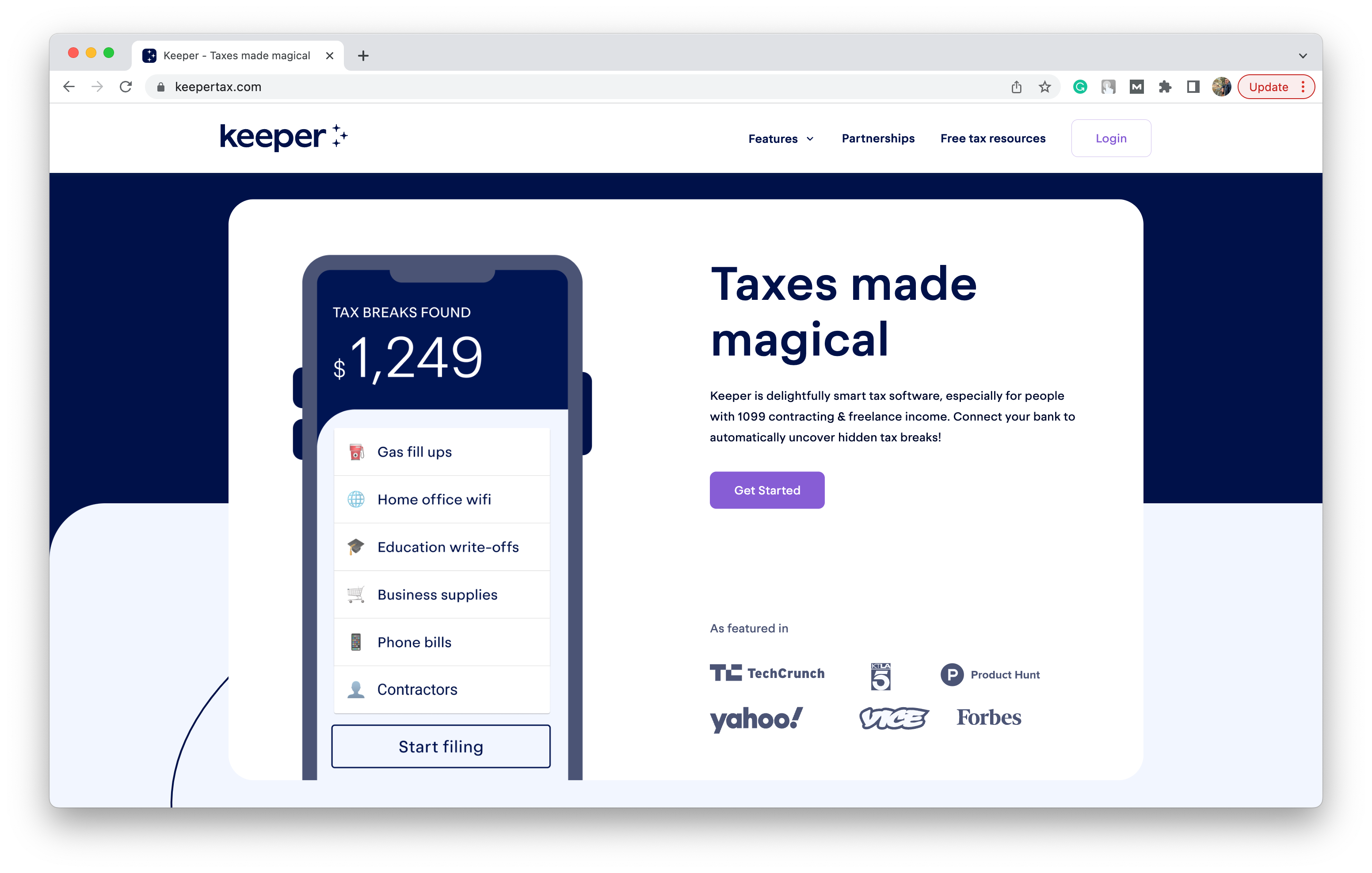
Keeper Tax is on the growing list of companies that already integrated GPT-3 technology into their apps (shot from the Keeper Tax website)
OpenAI, the company behind ChatGPT, also offers a tutorial on how to integrate the bot for various use cases. For example, on this page, they explain how to replace a standard FAQ block in the app with an "open question" block, so the bot can write a custom answer to a user based on your knowledge base.
Finally, you can check this page for even more examples!
💡 Takeaways
By considering the different ways to integrate with ChatGPT in their mobile or web app, businesses can select the approach that aligns best with their needs and resources. Whether a business is looking for a quick and easy solution or a customized chatbot with advanced capabilities, there is a method available to help take their app to the next level.
When it comes down to specific options, there are 3 major approaches to choose from:
- API integration — just a direct “window” within your app so users can ask ChatGPT something.
- Using a chatbot builder platform — a quick and simple way to build a chatbot with GPT-3 integration but limited functionality.
- Custom implementation — custom development will require the most resources yet will open up the broadest customization possibilities.
If you’re looking for a Tech Partner to enhance your app with ChatGPT capabilities, drop us a line and we’ll see where our expertise and your needs cross 🙂

![Stormotion client Alexander Wolff, CPO from [object Object]](/static/a16ba3c9580effc3ab9a68d115eadffe/b0e74/alex.png)
